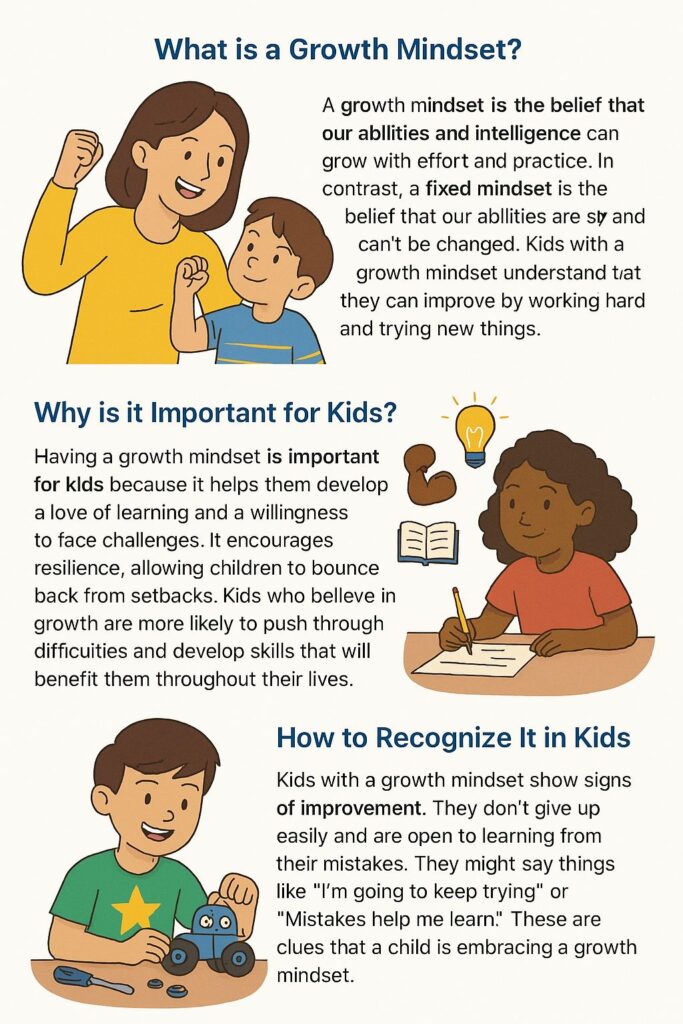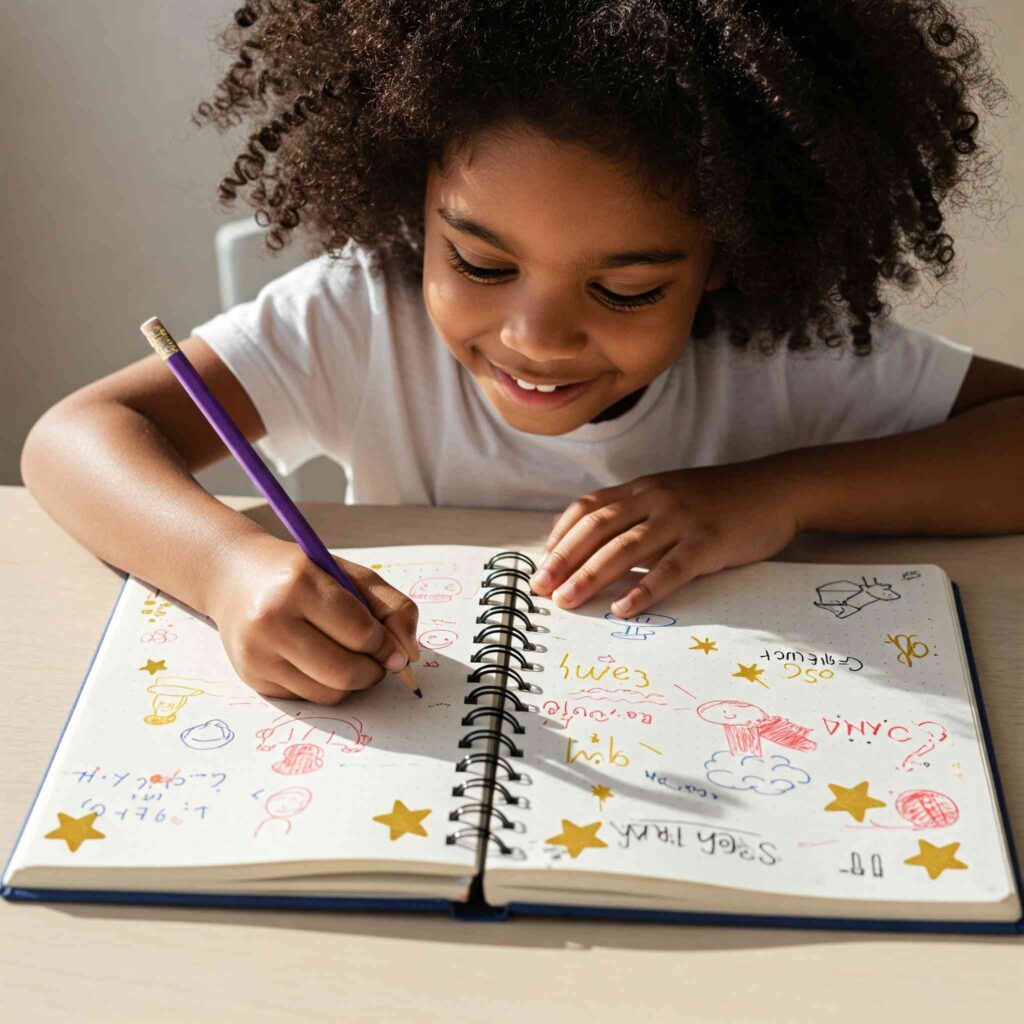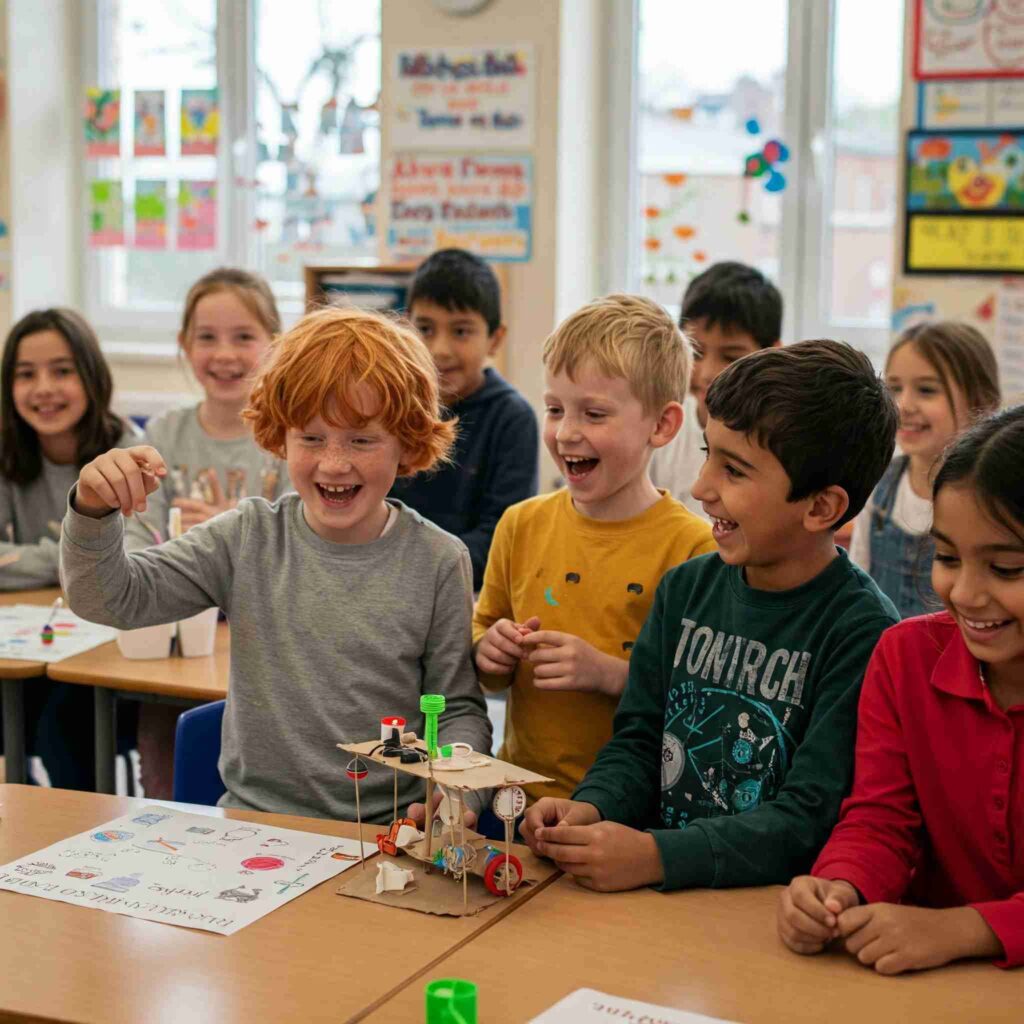1. Introduction to Growth Mindset for Kids
What is a Growth Mindset?
Growth mindset for kids is the idea that you can get better at things if you work hard and practice. When kids have this mindset, they know that their intelligence and abilities can be different – they can be developed by learning from mistakes and pushing themselves.
Why is a Growth Mindset Important for Kids?
A growth mindset helps children persevere and bounce back. They realize that failing is not terrible but actually a means of learning and improvement. Children are likely to take risks, get improved at doing something, and develop faith in themselves when they have a growth mindset.
How to Recognize a Growth Mindset in Kids
Search for the following signs:
- Effort-oriented language involves applying terminologies such as, “I’ll keep practicing,” rather than, “I can’t do this.”
- Children with a growth mindset see mistakes as a means of learning.
- Resilience during adversity: When confronted with adversity, they continue to try and attempt new solutions.
By encouraging and nurturing a growth mindset, we enable our children to build a foundation for learning across their lifespan and for self-growth.
For more resources on fostering a growth mindset, visit Mindset Works for activities and research-based insights.

2. Practical Activities for Developing a Growth Mindset
A growth mindset is the belief that ability and intelligence can be developed through effort, practice, and learning from mistakes. Below are three effective activities that parents and teachers can utilize to teach children a growth mindset:
Activity 1: Puzzle Challenges to Improve Problem-Solving
Puzzle problems are an excellent method of having children think critically and come up with solutions. By providing them with various types of puzzles — such as jigsaw puzzles, brain teasers, or logical puzzles — you can teach them to deal with problems, persist when faced with difficulty, and be proud when they figure it out. The key is to have them keep going, even when the puzzle is challenging.

Activity 2: Growth Mindset Journal for Daily Reflections
Make your child maintain a journal to record their day, noting what they did and how they are getting better. The journal can include observations on what did work, what did not work, and how the errors can be framed as opportunities to become better. This makes children shift their focus from mere results to always getting better.

Activity 3: Group Activities That Involve Teamwork and Learning from Mistakes
Group activities like group projects or team games instill the value of teamwork and learning from errors. Kids will understand that mistakes and working together are all part of the learning process. This makes them more determined to persevere and continue to improve as a team.

By including these activities, you can teach children to have a growth mindset that helps them accept challenges, overcome obstacles, and learn from what they do.
3. Books that Teach a Growth Mindset to Kids
Books are an excellent way to teach children about growth mindset. Here are three books that talk about not giving up, overcoming obstacles, and having faith in oneself:
Book 1: “The Most Magnificent Thing” by Ashley Spires
This pleasant tale teaches children the value of persistence and problem-solving. The protagonist, a young girl, continues to try her best even when things do not work out as she wants. It is a wonderful tale to teach children that errors are inevitable, and persistence leads you to success.
Book 2: “Giraffes Can’t Dance” by Giles Andreae
This beautifully illustrated book is about Gerald the giraffe, who becomes a dancer by having faith in himself and not letting his fears get the best of him. It shows that believing in yourself is the key to overcoming obstacles and doing wonderful things.
Book 3: “Your Fantastic Elastic Brain” by JoAnn Deak
This book is wonderful to demonstrate to children how their brain can develop. It illustrates how the brain gets improved by acquiring something new, and it instructs children to keep practicing and learning even when it is difficult at the beginning.
Through these books, kids will learn about a growth mindset and will also think that they can do anything if they work hard and keep trying.
To further explore effective strategies for growth mindset, check out resources from Edutopia.
4. Growth Mindset in the Classroom
Creating a growth mindset classroom can make learning much simpler for a child. The following are three strategies teachers can use to encourage this mindset:
Teaching Strategies: Incorporating Praise for Effort, Not Just Results
When educators praise effort and not just the result, they are showing children that effort counts. For example, saying “I’m proud of how much effort you put into that project” causes children to think about the process and not the end result.

Creating a Safe Space for Mistakes
Mistakes are a part of learning. Teachers can design a classroom that sees mistakes as opportunities for growth instead of as mistakes. By showing students that mistakes are okay, teachers can facilitate the children to be resilient and enjoy learning.

Encouraging Perseverance
Teachers can encourage students to be more resolute by teaching them how to overcome obstacles. For instance, teachers can instruct students to break, request assistance whenever they need it, and examine problems differently.
With these tactics, it is possible to establish a growth-minded classroom where children are motivated to push themselves and learn more.
You can also learn more about fostering a growth mindset in classrooms from The New York Times.
5. How to Talk to Kids About Failure and Mistakes
Discussing errors and failure with children is crucial to build resilience and growth mindset. Here are some tips on how to assist them during times of adversity:
The Power of Language
Use positive language when discussing failure. Directly telling someone “You failed” is not as effective as explaining it as, “That didn’t work this time, but you learned things that will help you later.” This shift is centered on gaining something rather than the outcome.

Framing Mistakes as Learning Opportunities
Educate children to view errors as precious learning experiences. For example, when a child makes an error, say to them, “What can we learn from this?” It makes them realize that errors are crucial steps toward achievement.
Success Stories
Share stories about successful individuals who experienced failures throughout their journey, such as Thomas Edison’s numerous errors before developing the light bulb or Michael Jordan’s initial failures at playing basketball. These narratives can assist in making children aware that everyone fails at times and that success is achievable by merely persevering.

When kids learn to view failure as an opportunity to learn, they can become more growth-oriented and resilient, not flawless.
6. Inspirational Quotes and Stories for Kids
The Power of Words You should speak positively about failure. Don’t say “You failed.” Say “That did not work this time, but you learned something that will help you next time.” This shifts the emphasis from the outcome to learning and development.
Quote 1: “It’s not that I’m so smart, it’s just that I stay with problems longer.” – Albert Einstein
This is telling children that it is not just because of natural talent that one is intelligent, but because of hard work and willpower too.
Quote 2: “Failure is not the opposite of success; it’s part of success.” – Arianna Huffington
This is a quote that informs kids that failure is part of success. Failure will get you closer to your goal.
Story: The Boy Who Embraced Challenges
There was once a boy who struggled to read. But he never quit trying. He practiced every day, and gradually he improved at reading. One day, he read an entire book cover to cover without ever stopping! This teaches us that if you persist, you can do it.
These proverbs and fables motivate children to remain positive, continue to learn, and feel that they can accomplish wonderful things.
PBS Parents offers wonderful resources to help raise a growth-minded child, with helpful tips for parents.
7. Growth Mindset Challenges for Kids
Challenge children to attempt challenges that will help them develop. Below are three weekly challenges to develop resilience and determination among children:
Weekly Challenge 1: Set a Personal Learning Goal
Have your child pick out something that they would like to learn. Assign them something to do for the week. This might be to learn a new talent, such as drawing or a musical instrument.
Weekly Challenge 2: Complete a Puzzle or Challenge Outside of Their Comfort Zone
Challenge your child to do something new, like figuring out an extremely challenging puzzle or learning a challenging game. This makes them appreciate novelty.
Weekly Challenge 3: Reflect on What Was Learned from Failure
Make your child reflect on their errors and note down what they can do better next time. This builds resilience and a positive attitude towards adversity.
By observing how they improve and providing them with a set of small successes, children can accumulate self-confidence and continue to develop.
8. Parenting Tips for Encouraging a Growth Mindset
As a parent, you have numerous options to enable your children to have a growth mindset.
Praise the Process, Not Just the Outcome

Praise the effort, process, and perseverance of your child more than their achievement. It helps them know that practice yields progress.
Model Growth Mindset
Parents must demonstrate that they can learn from their own failures. When you stumble, demonstrate to your child how to learn from it and move on.
Encourage Challenges
Make your child struggle with the task for a while before helping them. This makes them stronger and enhances their problem-solving ability.
A kid carefully assembles a jigsaw puzzle while a parent watches and offers advice.
9. Success Stories of Kids Who Embrace Growth Mindset
Actual instances of children with a growth mindset can motivate people around them to have the same mindset.
Story 1: The Math Struggler Who Overcame the Challenge
They were among those children who did not like math but tried their best every single day. They started to see their grades improve after a while and believed in themselves.
Story 2: The Athlete Who Never Gave Up
Initially, the young player could not perform well. But through sheer hard work and persistence, with unbreakable willpower, gradually, they turned out to be a superb player.
These success stories show that with persistence and effort, kids can overcome challenges and achieve great things.
10. Growth Mindset for Kids: Overcoming Common Obstacles
Having a growth mindset enables you to survive difficult times. Below are three common challenges children face and how to overcome them:
Obstacle 1: Fear of Failure
Look upon failure as an opportunity to learn, rather than as something to be feared.
Obstacle 2: Lack of Motivation
Encourage kids to find their own motivation by emphasizing how important the journey of learning is, and emphasizing the process over the destination.
Obstacle 3: Negative Self-Talk
Assist children in turning their negative self-talk into positive affirmations.

With the right mindset, kids can overcome these obstacles and achieve their goals.



